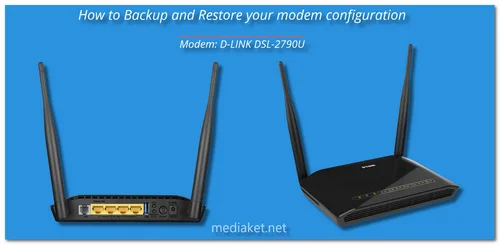In this tutorial, mediaket show you how to Backup and Restore D-LINK DSL-2790U modem configuration, step by step, in less than 3 minutes. Why you need to backup your modem router configuration? ...
"The Backup Settings option allows you to save a file containing all your modem router's configuration settings, like wireless settings, port forwarding, WAN setup, DNS, admin password, user password, internet password etc. to a file on your computer. This file can then be used to restore your settings if the modem router is reset to the Factory Default settings."
Overview:
D-LINK DSL-2790U - Wireless N300 ADSL2+ Modem Router:
- The DSL-2790U reaches wireless speeds that are almost 6 times faster than 802.11g1. Maximize wireless performance by connecting it to computers equipped with Wireless N interfaces and stay connected from virtually anywhere at home and in the office. The DSL-2790U can also be used with 802.11g and 802.11b wireless networks to enable significantly improved reception. You can even share your mobile Internet connection when on the road by connecting a compatible 3G USB adapter.
- The DSL-2790U’s security features prevent unauthorized access to the home and office network from wireless devices or from the Internet.
- The Wireless N300 ADSL2+ Modem Router is backward compatible with existing 802.11b and 802.11g wireless equipment, ensuring compatibility with a wide range of wireless devices, making your older devices still relevant.
Device Interfaces:
- RJ-11 ADSL port.
- 4 RJ-45 10/100BASE-TX Ethernet ports with auto MDI/MDIX.
- Built-in 802.11n wireless LAN.
- Factory reset button.
- WPS button.
- Wireless on/off switch (optional).
- Power on/off switch.
- USB host 2.0.
Router Features:
- NAT & NAPT.
- DHCP server/client/relay.
- Static Routing, RIP v.1, v.2.
- Universal Plug and Play (UPnP) compliant.
- SNTP, DNS proxy and IGMP proxy.
- Supports IPv6.
- Dynamic Domain Name System (DDNS).
- Virtual server.
...

